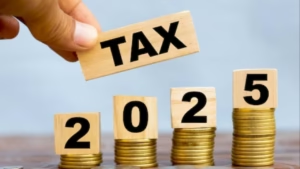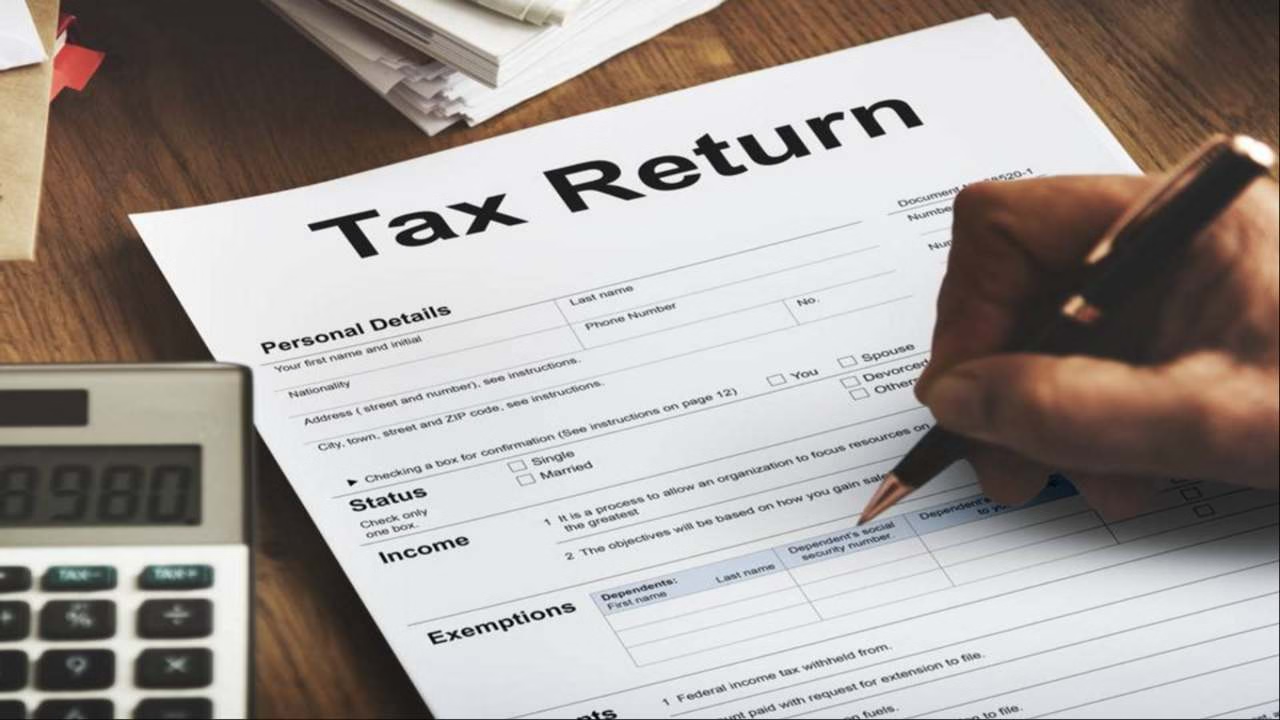Income Tax Filing: Is it necessary to visit a Chartered Accountant (CA) every time you file your Income Tax Return (ITR)? The answer is ‘No’.
Suppose your income is limited to salary. In that case, you can easily file your ITR on your own without the help of any professional.
Ex, Suppose your income is limited to salary, savings account interest, rent, or some simple investments.
In that case, you can easily file your ITR without the help of a professional. The government has made the ITR filing process much simpler than before.

Income Tax Filing Documents Required
PAN card and Aadhaar (should be linked)
Form 16 – for salaried individuals
Form 26AS, AIS, TIS
Bank account details – for ITR refund
Tax-saving investment certificates– PPF, ELSS, LIC, mutual funds, health insurance, donation receipts, etc.
Home loan interest certificate, if you have taken a home loan (Banks like SBI, HDFC, ICICI have reduced interest rates on savings accounts.)
How to file an ITR filing:
- First, log in to [incometax.gov.in](https://www.incometax.gov.in).
- Go to E-File > Income Tax Return > File Income Tax Return.
- Select AY 2025-26 and choose online mode.
- Based on your income, select the appropriate ITR form.
- Review pre-filled information on the portal, add any additional income or deductions.
- Calculate tax – if any tax is payable, make the payment.
- Validate the form, review the declaration, and submit.
- Lastly, e-verify the return using Aadhaar OTP, net banking, or other available methods.
What is the Last Date to File ITR?
Individual / HUF / AOP / BOI – September 15, 2025
Businesses requiring audit – October 31, 2025
Businesses requiring transfer pricing report – November 30, 2025
Revised return– December 31, 2025
Belated return– December 31, 2025
Updated return (within 4 years from the end of relevant AY) – Till March 31, 2030
Filing your ITR independently is now very simple, especially for salaried individuals with basic income sources.
1 – Avoid Choosing the Wrong Form
One of the most common mistakes people make while filing their income tax return is selecting the wrong ITR form.
The Income Tax Department has issued 7 different categories of forms for different types of taxpayers.
If you do not select the correct form according to your category, your return will be considered invalid, and you’ll have to file your ITR again.
2 – Choosing the Tax Regime
While filing your income tax return, you must decide in advance whether you want to opt for the old tax regime or the new tax regime.
If you wish to remain under the old regime, you need to inform your employer. Otherwise, the new tax regime will be selected by default.
3 – Verification with Form 26AS
Apart from Form 16, salaried taxpayers’ details are also reflected in Form 26AS.
So, before filing your return, verify your salary, savings/fixed deposit interest, and other income details with Form 26AS to avoid discrepancies.
4 – Form 16 is a Crucial Document
It is very important for employees to collect Form 16 from their company.
This is issued by the employer and contains details about TDS (Tax Deducted at Source).
5 – Review HRA (House Rent Allowance) Details
If salary is your only income and you live in a rented house, then choosing the old tax regime may be more beneficial, as it provides tax exemption on HRA.
However, if you are not living on rent, the new tax regime could be more suitable.
That’s why it’s advised to carefully review all details before selecting the tax regime.
6 – Pay Attention to Investments
If you have invested in government schemes like PPF, SSY, KVP, or NSC, it is better not to opt for the new tax regime, as you may not get tax benefits under it.
These schemes are helpful for long-term financial planning and offer exemptions under the old tax regime.
However, if this is your first time filing taxes, and apart from salary, you have no investments, health insurance, or life insurance, then you’ll simply need to fill in your basic details.
You may also take the help of a chartered accountant or professional, if needed.
7 – Income from House Property
If salaried individuals are earning income from one house property, they can file ITR-1.
But if they have income from more than one house property, then they will have to file ITR-2.
Read Also- Stock Market: IFCI, MMTC Shine Bright with Strong Buying Interest






